#rememberthis
Before the war: Agnes Darvas was born in Miskolc, Hungary in January 1932. She lived a good life with her middle-class family.
During the Holocaust: Agnes and her family were forced to live in the Miskolc ghetto from May 1944, and then, in June 1944, they were deported to Auschwitz. Upon their arrival in Auschwitz, her cousins, grandparents, and her nephew were all selected and sent to the gas chamber. She was transferred to many camps with her mother, Kraków-Płaszów, Neustadt, and Mauthausen, and was liberated in Bergen-Belsen in April 1945.
After the Holocaust: After liberation, she and her mother returned to Hungary. Agnes became a veterinarian and currently resides in Budapest.
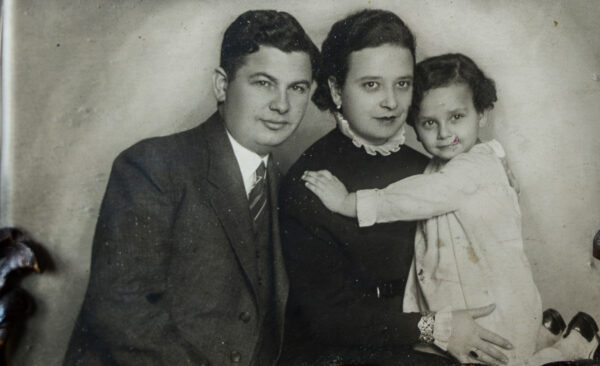
Agnes with her parents before the war.
#rememberthis
Before the war: Alberto Israël was born in August 1927 in Rhodes Island, Greece.
During the Holocaust: In August 1944, Alberto was deported to Auschwitz. He arrived with his parents and two brothers, who did not survive the Holocaust. He was then forced to do slave labor in a coal mine nearby before being sent on a death march and deported to Mauthausen. At the war’s end, he was transferred to Ebensee, a subcamp of Mauthausen, where he was liberated in May 1945.
After the Holocaust: After the war, he did not want to return home. He now lives in Brussels, Belgium. He has returned to Auschwitz several times, often as a tour guide for visitors.
#rememberthis
Before the war: Albrecht Weinberg was born in 1925 in Rauderfehn, East Frisia in Germany. He had a brother, Dieter and sister, Friedel. He was arrested at the age of 13 for forced labor.
During the Holocaust: In April 1943, Albrecht was deported to Auschwitz. His parents had also been deported to Auschwitz from Theresienstadt and were killed at selection, while his siblings were selected for labor. In January 1945, he was forced on a death march to the Mittelbau-Dora concentration camp, then to Bergen-Belsen. He was liberated there on April 15, 1945.
After the Holocaust: After liberation, Albrecht was reunited with his siblings. After the death of his brother, the remaining siblings emigrated to the United States. In 2012, they returned to East Frisia.
#rememberthis
Before the war: Alfred Gerhard Sobotka was born in 1928, in Prague. His father owned a carpet shop near Můstek, and his mother was a housewife. Alfred’s education was cut short by the outbreak of World War II. During this time, his father lost the shop, and Alfred helped support the family.
During the Holocaust: On July 13, 1943, Alfred, his parents, and younger brother were deported to Terezín in the last transport from Prague. Though separated upon arrival, they occasionally saw one another. Alfred worked in the camp’s garden and a workshop repairing train cars. On September 28, 1944, he was transported to Auschwitz; his father and brother followed two days later but did not survive. Alfred was liberated from Auschwitz by Soviet forces.
After the war: Alfred returned to Prague briefly before moving to Paris, where he reunited with his mother and grandparents and trained as a goldsmith. In 1948, he emigrated to Brazil with his mother, settling in Rio de Janeiro. There, he became a successful jewelry designer, earning prestigious awards and opening his own studio. Alfred, known as Freddy, lives in Rio with his wife Diamantine and their three daughters.
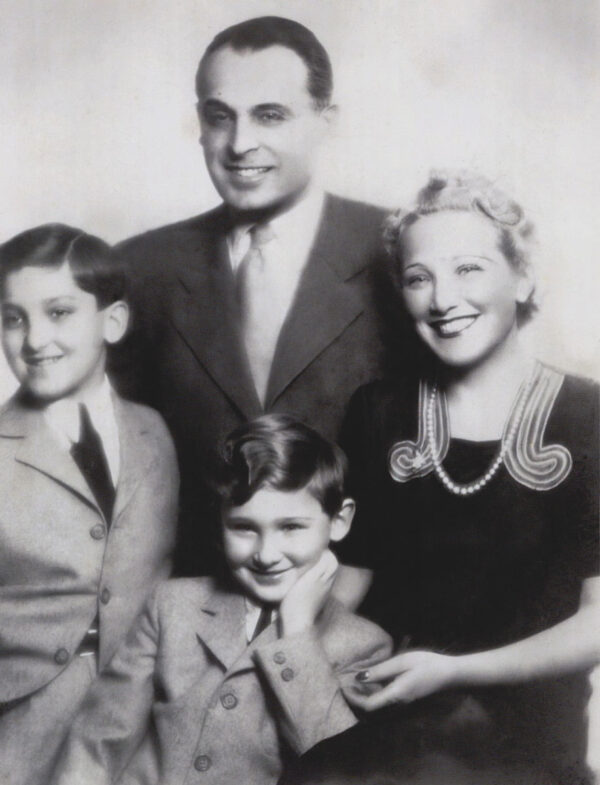
A photo taken on Freddy Bar Mitzvah in Prague (then Czechoslovakia). Pictured are Freddy’s parents, Erwin and Maria and his younger brother, Tomas. Only Freddy and his mother survived the Holocaust. His father and brother were immediately murdered in the gas chamber after arriving in Auschwitz.
#rememberthis
Before the war: Irene Weiss, named Perl Ruchel Fogel, was born on November 21, 1930, in Bótrágy, Czechoslovakia. She was one of six siblings.
During the Holocaust: With the Nazi invasion of Czechoslovakia, Irene’s hometown was under Hungarian rule. In April 1944, the Jews living in Hungary were forced into the ghetto in Munkács. In May, Irene and her family were deported to Auschwitz. At selection, her mother and three siblings were murdered. In the camp, Irene, her sister, and her two aunts worked in Kanada, sorting through victims’ items. In January 1945, they were forced on a death march to Ravensbrück, later transported to Neustadt-Glewe. With the arrival of Soviet troops, Irene, her sister and one aunt left for Prague.
After the Holocaust: Eventually, with the help of family members and aid from Jewish organizations, the three immigrated to New York in 1947. Irene married in 1949 and moved to Virginia. She received a Bachelor’s in education and taught in public school for over a decade
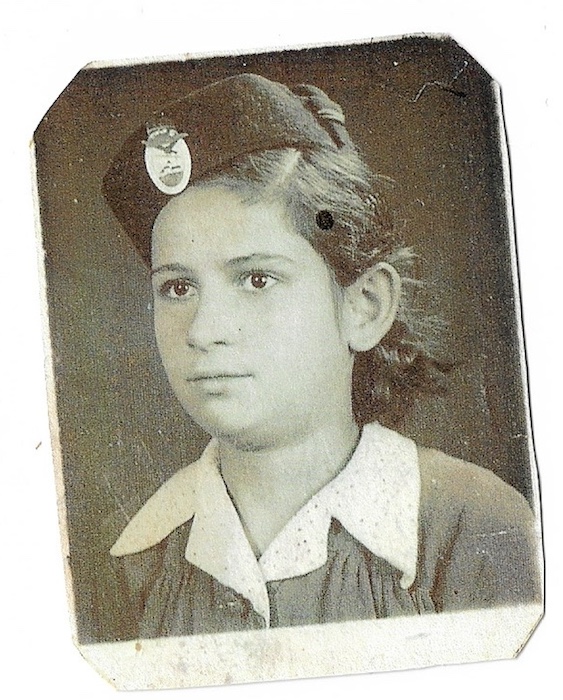
#rememberthis
Before the war: Andorné Szegö, née Zsuzsanna Ungerleider was born in 1928 in Mezőcsát, Hungary. Her father died when she was one year old, forcing her mother to go back to her hometown of Salgótarján.
During the Holocaust: Andorné was forced to leave her home and stay in a mine stable, then was deported to Auschwitz. Only she and her mother were chosen at selection for work; the rest were sent to the gas chamber. Later, they were deported to Ravensbrück, then to Neustadt bei Coburg, a subcamp of the Buchenwald concentration camp, and forced to work in the factory. With the evacuation of the camp, they were sent on a death march and liberated by the U.S. army in a German village.
After the Holocaust: After liberation, Andorné and her mother returned to their hometown. She married her husband in 1946 and had two children.
#rememberthis
Before the war: Andra Bucci was born in July 1939, in Fiume, Italy (current day Rijeka, Croatia). She has sister who was two years older than her.
During the Holocaust: In March 1944, the Nazis arrested Andra and her family and imprisoned them at Risiera di San Sabba, a transit concentration camp. Andra was 4 years old when she, her sister, mother, aunt, grandmother and cousin were deported to Auschwitz. They arrived on April 4, 1944, and the sisters were mistaken for twins, thus spared from the gas chamber. They spent 10 months in Auschwitz. Their mother, Mira, was transferred from Auschwitz to Germany for forced labor in a munitions factory. Their father, Giovanni, had been a prisoner of war in South Africa during the war. The sisters were liberated on January 27, 1945.
After the Holocaust: After liberation, the sisters were sent to an orphanage in Lingfield, England. Their parents had also survived and reunited with their daughters, returning to their home in 1946. Andra now lives in Sacramento; Tatiana lives in Belgium.
#rememberthis
Before the war: Anita Lasker-Wallfisch was born in Breslau, Germany (now Wrocław, Poland) on July 25, 1925. She was one of three daughters. At 12, she was sent to Berlin to study the cello privately because her family could not find a teacher who would agree to teach a Jewish child in her hometown. Her older sister left for England before the invasion of Poland.
During the Holocaust: Her parents were deported in April 1942 to the Isbiza transit ghetto near Lublin. She never saw them again. Anita and one of her sisters were forced laborers in a paper factory, where they were arrested for forging papers. Sent to prison for over a year, Anita was saved from earlier deportation with the local Jewish population. She was eventually deported to Auschwitz in 1943 and kept separately as a convicted criminal (Karteihäftling) and so avoided the selection. She played the cello in the Auschwitz women’s orchestra. In the fall of 1944, she and her sister were transferred to Bergen-Belsen, where she was liberated on April 15, 1945.
After the Holocaust: Eleven months later, Anita emigrated to London, where she became a professional musician and was the founding member of the English Chamber Orchestra. She married and had two children.
#rememberthis
Before the war: Arie Eitani, originally named Armin Guttman, was born in Milan, Italy, in 1927 and was the only child of Hungarian national parents. Forced to leave Italy in 1939, the family returned to Hungary.
During the Holocaust: His father, Samuel, was conscripted to forced labor in the Hungarian Jewish Labor Service in 1942. In May 1944, Arie, his mother, both grandmothers, grandfather and other family members were forced to live in the Eger ghetto. Nearly a month later, they were sent to Auschwitz, where only Arie was not murdered. Arie was later transferred for forced labor to the Kaufering camp, a subcamp of Dachau. From there, he was sent on a death march to the Allach camp, also a subcamp of Dachau. When liberated by the US army on April 30, 1945, Arie was sick with typhus. He eventually returned to Eger, Hungary.
After the Holocaust: In November 1946, Arie boarded the Knesset Israel vessel, an illegal immigrant ship trying to reach Palestine that British soldiers intercepted in Cyprus. He eventually reached Palestine in 1947 and fought in the War of Independence. Arie is one of the founders of Kibbutz Ha’on in northern Israel. He met and married Rina, a Holocaust survivor from Poland. Rina z”l and Arie have two children, eight grandchildren and seven great-grandchildren.
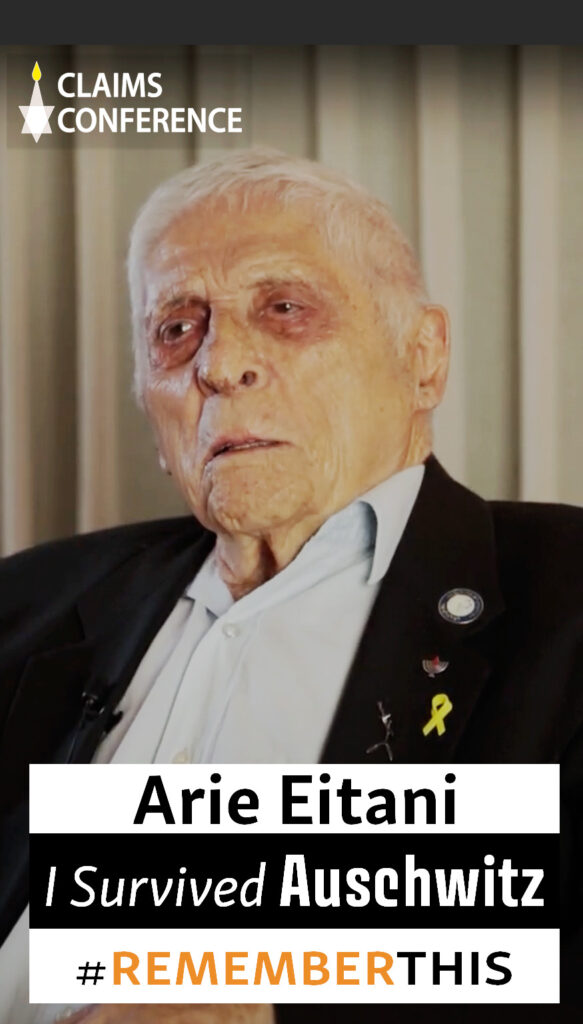
#rememberthis
Before the war: Aron Krell was born in November 1927, in Lódź, Poland. He was the youngest of three boys. His father died of pneumonia before the war.
During the Holocaust: Aron, at only 12 years old, and his family were forcibly moved into the Lódź ghetto before being deported to Auschwitz-Birkenau when the ghetto was liquidated on August 28, 1944. His brother died in the ghetto from malnutrition. Aron’s mother was murdered at selection in the camp. His other brother, Moshe, and he were registered in the camp, but Moshe died a few days later. After the camp was evacuated, Aron was transported to Sachsenhausen, its subcamp, Lieberose, and Mauthausen. On May 5, 1945, Aron was liberated by the US army in Gunskirchen, a subcamp of Mauthausen.
After the Holocaust: After the war, Aron moved to the United States and now resides in New York City.
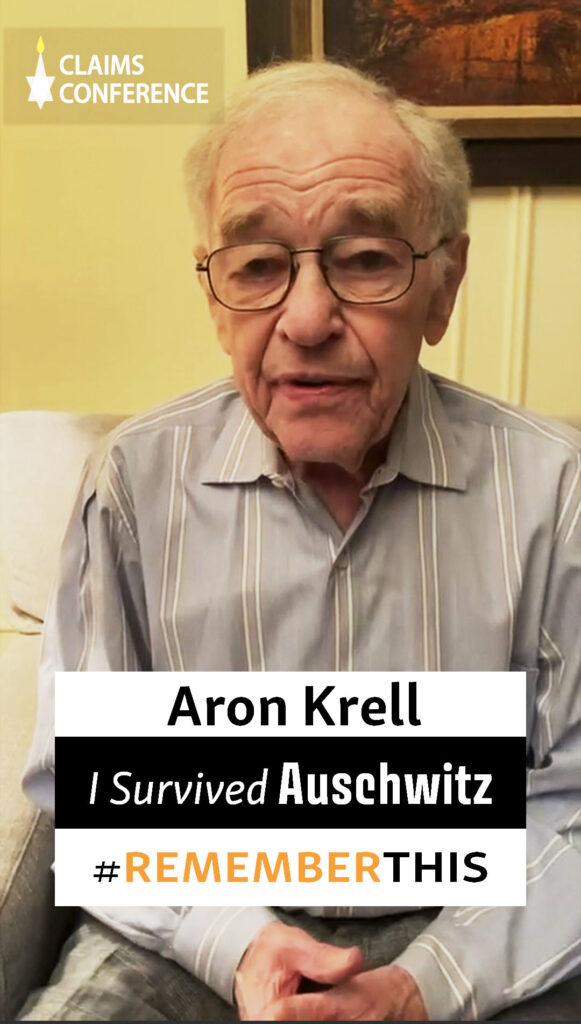
#rememberthis
Before the war: Bill (Bela) Lowy was born in Hajdúhadház, Hungary in March 1928. He was one of seven siblings.
During the Holocaust: Bill was 16 years old when he and his family arrived at Auschwitz in 1944. He and his father were separated from the rest of their family upon arrival. Eventually, his father was taken to hard labor, and he never saw him again. Bill was too young to be sent for labor but began saying he was 18 and was sent to Dachau to work on planes. Bill escaped Dachau to the mountains with the approaching army, where the US army liberated him.
After the Holocaust: After the war, Bill learned that two of his older brothers survived a labor camp in Hungary. He eventually settled in Toronto, Canada.
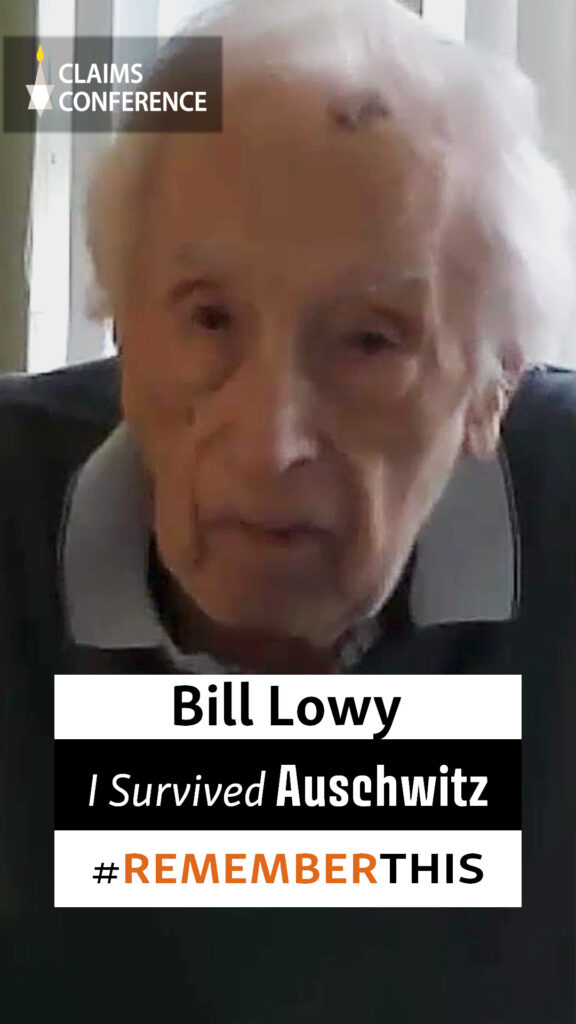
#rememberthis
Before the war: Bronia was born in Jaworzno, Poland, to Israel and Ida Rubin. She had three older siblings and two younger sisters. She was only eight years old when the war broke out in Poland.
During the Holocaust: After her oldest brother was taken to the Blechhammer labor camp and her parents and other brother were deported to Auschwitz, she and her three sisters fled to the neighboring town of Sosnowiec. Eventually, they were relocated to a ghetto by the Nazis and sent to Auschwitz in August 1943. Bronia was in Auschwitz until January 1945, when she was forced on a death march to Germany. She was liberated from the Neustadt-Gleve camp by the American and Russian armies in May 1945.
After the Holocaust: Only Bronia and her brother Mendek survived the Holocaust. Mendek heard that Bronia was living in Slovakia and brought her to his new home in Germany. At 15, Bronia immigrated with Mendek to the United States. She received a master’s degree in education and was a teacher. She married Ephraim Brandman in 1952. She had two daughters and is a grandmother and great-grandmother of four.
#rememberthis
Before the war: Chaim Altbach was born in Drohowitz, Poland (current day Ukraine) in 1930.
During the Holocaust: Chaim was 9 years old when the war began, and a 15-year-old boy when the war ended. He arrived in Auschwitz at the age of 14, after passing through several camps. He remembers the journey to Auschwitz by train in August, in terrible overcrowding, without food or water.
After the Holocaust: He emigrated to Israel in 1947. He married, Hagar and they had three children and 7 grandchildren.
#rememberthis
Before the war: David Levin was born in 1926 in Warsaw, Poland. He grew up with three siblings and his father was a chocolate manufacturer.
During the Holocaust: David and his family were moved to the Warsaw ghetto, which was sealed in November 1940. He was then deported to Majdanek and later to Auschwitz-Birkenau. David’s brother, was shot and killed in the camp. David was sent on a death march and transported to Buchenwald where he was self-liberated from on April 11, 1945. He was the only member of his family to survive.
After the Holocaust: After the war, he moved to Berlin where he met his wife, Christa.
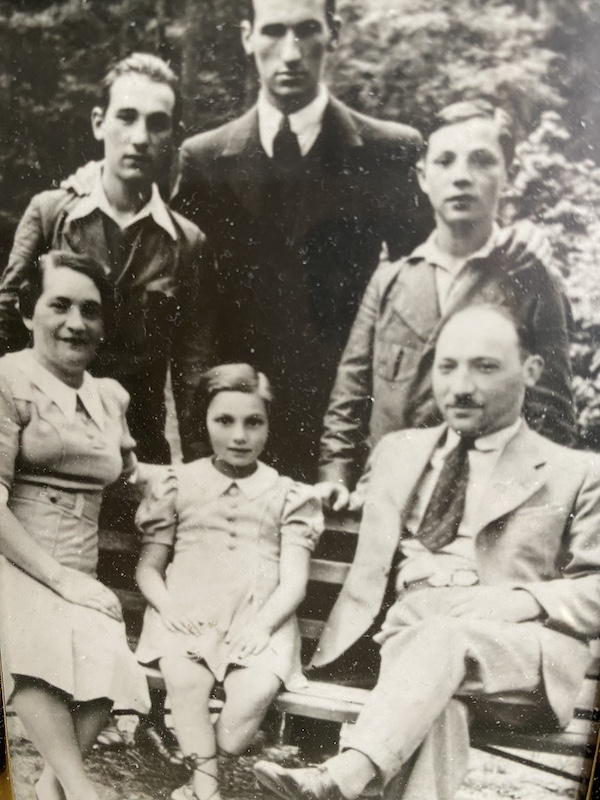
David Levin (top right) with his family before the Holocaust. David is the only member of his family who survived.
#rememberthis
Before the war: Edith Bruck, née Steinschreiber was born in Tiszabercel, Hungary in 1931 into a poor family with five siblings.
During the Holocaust: She was 13 years old when she was deported to Auschwitz in 1943 with her parents, two brothers and sister, Eliz. Her parents and brother died in the camps, her mother in Auschwitz and her father in Dachau. After Auschwitz, she and her sister were deported to several camps: Dachau, Christianstadt and Bergen-Belsen. They were liberated from Bergen-Belsen in April 1945 by British forces.
After the Holocaust: After the war, Edith and her sister reunited with their siblings, two other sisters and one brother. After living in Israel, Edith settled in Rome in 1954 and became a writer.

The Bruck family before deportation, brother Laci, mother Berta, sisters Adele and Magda, and Edith
↑top
All content ⒸConference on Jewish Material Claims Against Germany (Claims Conference)